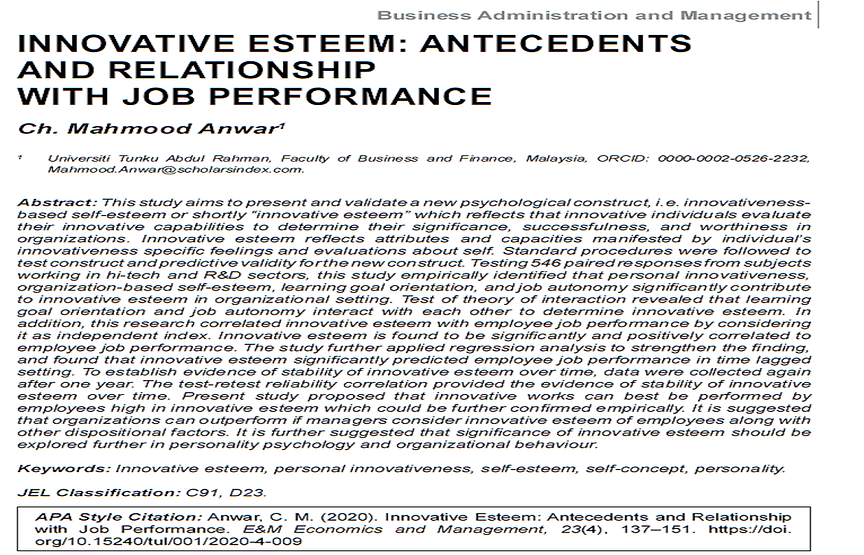Goldsmith and Matherly (1987) tested the associations between Kirton’s adaption-innovation inventory (KAI) with famous Rosenberg self-esteem scale (RSS). They found that innovative people are more likely to reflect high self-esteem but they did not endeavor to answer the question “why innovative people reflect high self-esteem?” This innovation is an answer to this question.
The study study deems that individuals high in innovative esteem could better produce and implement their innovative ideas within reasonable time frame. To see how Innovative esteem contributes to practice, managers can focus on innovative esteem of employees along with other dispositional factors to enhance innovative outcomes. Anwar (2017) suggested that tasks requiring scientific innovation and creativity could better be performed by employees high in creative self-efficacy. This innovation proposes that innovative works can best be performed by employees high in innovative esteem which could be further confirmed empirically.
This innovation was published in Ekonomie a Management [Clarivate Analytics Impact Factor for 2020: 1.446] and International Journal of Innovation, Creativity & Change [Scopus (Q3), ERA].
References:
Anwar, C.M. (2020). Innovative Esteem: Antecedents and Relationship with Job Performance. Ekonomie a Management, 23(4): 137-151. [Clarivate Analytics Impact Factor for 2020: 1.446]. https://www.ekonomie-management.cz/en/archiv/search/detail/1915-innovative-esteem-antecedents-and-relationship-with-job-performance
Anwar, C.M., Maludin, N.B., & Lee, C.Y. (2020). Employees’ evaluations about their innovative capabilities: A concept to achieve enhanced innovative performance. International Journal of Innovation, Creativity & Change, 10(10): 832-854.
Personality and innovation researchers, psychologists, and authors are welcome to adopt the Anwar’s Innovative esteem Scale (AIS). To use the scale, please send an email to Mahmood.Anwar@scholarsindex.com mentioning your general research idea and how Innovative esteem construct could be useful to your research.



